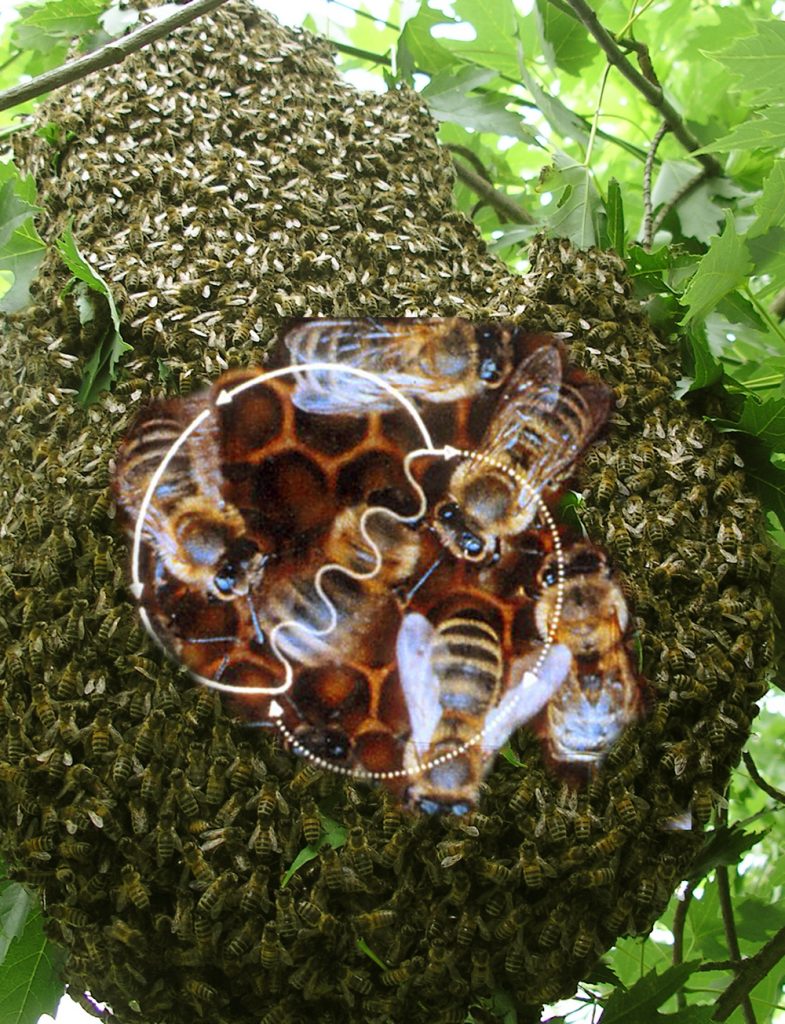I have learned more from bees than almost anything else.
Forget honey and even their pollination services! What we can learn from honeybees could change our whole way of thinking – but first we need to let go of the idea that humans are more important than anything else on the planet.
We have got more urban and disconnected from the natural world: from the source of our food, from clean air, from the soil, from insects. Did you know that 98% of land vertebrates on the planet are now people, their pets and their livestock? Frighteningly unbalanced – and unsustainable!
The honeybee colony is a perfect example of a family and a community that is balanced. It is a successful economy: the worker bees are able to adapt and change their roles as the need arises – to change from a forager to a nectar processor for instance. They trade, with flowers and each other. They waste no time, energy or resources. Every activity has a purpose. Four lessons to learn from honeybees: be balanced, adaptable, waste nothing and have a purpose! And here are some other lessons…
How to be healthy and safe: Our ‘Health and Safety’ tends to be unhealthy and unsafe. Honeybees have health in a varied diet (unless they are pollinating our mono crops). They also safeguard themselves from the viruses that proliferate in their crowded, heated colony, much as they do in our heated schools and offices. They collect and line their cavity with Propolis (‘defender of the city’), a resin they collect from trees that has anti-biotic, anti-bacterial, anti fungal properties.
How to be social: unlike humans who are herding animals, honeybees are eusocial animals. These are leaderless, self-regulating societies that are organised by the females. It is the female worker bees who have individual responsibility for communication with each other, sharing information and food, tasks and roles, so they can operate without a leader. We inhabit a world with leaders, hierarchy and competition. Being social means sharing, caring and communicating.
How to communicate effectively: Like us, worker bees have an amazingly complex communication system, including their waggle dance: a symbolic way of communicating that is unique to worker bees and humans: they dance, we talk. They give accurate, relevant, free information. That’s how they have evolved into such an intelligent society, and we have developed such complex brains. It is at the root of our innovation and creativity, including the invention of the great means of communication, the Internet. Unlike bees though, we use a lot of time and energy dealing with inaccurate, misleading, irrelevant information.
Drones and men, workers and women: Female worker bees and male drones show gender characteristics in their simplest form. Having an understanding of them would avoid a lot of unrealistic expectations and conflict between women and men. They defy quite a few stereotypes, for instance that females are gentle and passive, and males are active and aggressive. Actually it’s the other way around – it’s the workers who have the sting, not the drones! Like men, drones are focused (on getting to the queen), they have a competitive instinct (to get to the queen first), a self-destructive instinct (they die when they successfully mate with a queen), and like men, drones have a vital role as fathers.
I hope this shows how valuable honeybees are to us, and how much we really are connected with them
Sally Pemberton
sallyfp@beedance.co.uk
http://beedances.blogspot.co.uk

